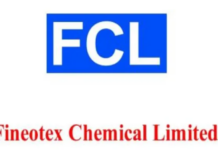By Saurabh Agarwal, Director, Kamdhenu Group
The arrival of monsoon is a welcome respite from the summer heat. But on the flip side, the wet spell is also associated with leaking roofs, seepage, and in some cases, collapse of buildings due to structural failure. It is a false notion that little can be done to prevent water-related issues once a structure has been constructed. Now, a range of products are easily available in the market that can ensure maximum protection from water damage right in the beginning at the construction phase, and even as an after-construction solution to protect homes and buildings. Read on to get a better understanding of the underlying causes of the problem and the range of remedies and solutions available to effectively address the problem at hand:
What causes water damage
Shoddy construction and use of sub-standard materials can cause cracks and crevices in concrete structures that allow water to penetrate. These are not just an eye-sore aesthetically, but also pose a hazard to the structural strength of the building. Identifying the root cause and prompt corrective measures to deal with any seepage or leakage is important to prevent the problem from worsening.
Installing drainage system and maintaining it is the first logical step that must be undertaken from the construction phase itself. A proper drainage system must, therefore, be installed on priority basis if your home doesn’t have one.
Awareness is the key to prevention
As the saying goes — A stitch in time saves nine. Thus, following basic principles of water proofing at relevant stages of construction is a sure shot way of ensuring a water-proof structure that stands the test of time. Design and construction elements to mitigate the danger at the design stage, provision for effective drainage systems, use of suitable materials such as bitumen or silicone-based water proofing systems in terrace and walls along with water repellant paints and emulsions are also effective in the fight against seepage, leakage and dampness.
For new constructions, admixtures, plasticisers and integral water-proofing compounds are available to provide an effective barrier against water from cutting through concrete. These can be conveniently built-in when constructing structures like foundation and retaining walls in basement, wet areas (toilet, balcony and kitchen), terrace, overhead and underground tanks, swimming pools, podium slab etc.
For the water-proofing solutions to be effective, critical components of the structure such as block walls and underground foundation need to be in top shape.
Solutions to check out
There are several corrective measures that can be adopted as per the problem and structural composition of the building.
- Liquid waterproofing is generally adopted for concrete and plasters. This innovative waterproofing solution acts as a tonic for cement and can be applied from the foundation to the roof of the building. This cement additive is specially formulated to increase the life span of buildings by preventing the development of cracks thereby preventing leakage and rusting.
- Water proofing compounds are increasingly becoming popular not only as a deterrent to water ingress but also as an aid for healthy construction, emulsion and protective coatings to limit the effect of vagaries of weather on buildings.
Five water proofing solutions that are currently preferred are:
- Conventional systems would include box-type water proofing with impervious stone slabs.
- Crystalline waterproofing systems and flexible membrane water proofing systems involve application of chemicals on the surface of concrete.
- Chemical coatings react with the soft by-products of the cement hydration process and form hard crystals. These crystals lodge themselves in the concrete pores, thereby making it impervious.
- Water-repellant impregnates are silicones which due to their low-viscosity impart repellant property to the surface on application.
Corporate Comm India (CCI Newswire)




























